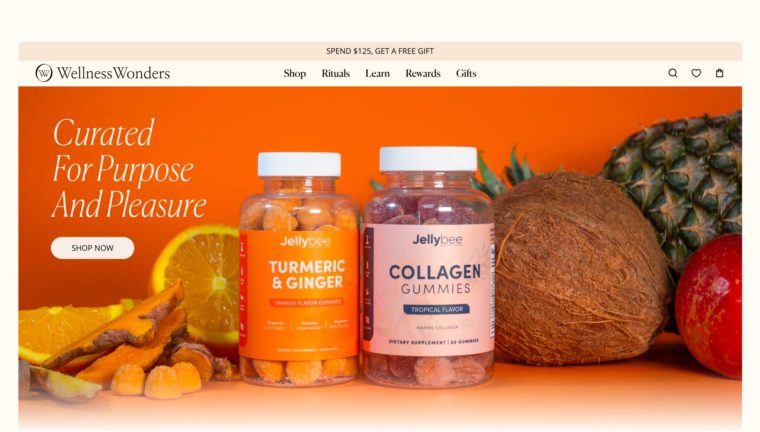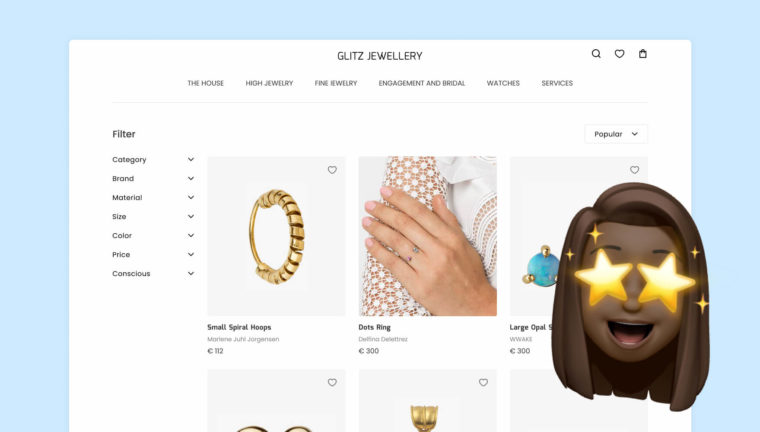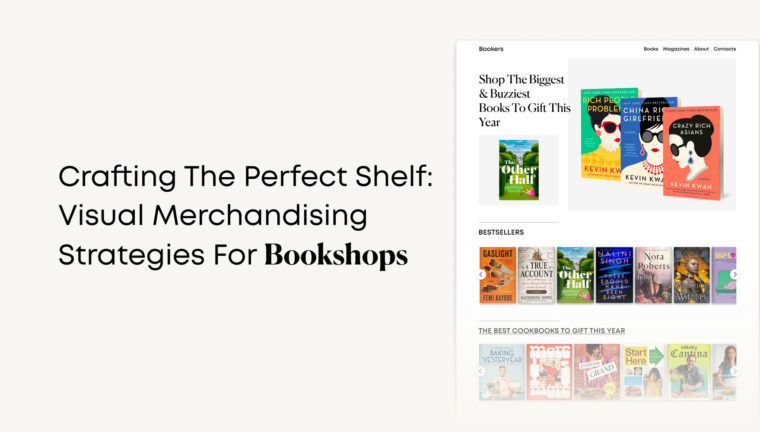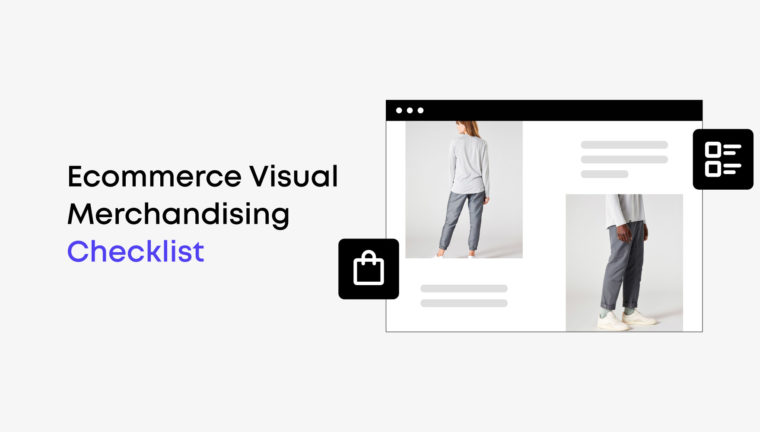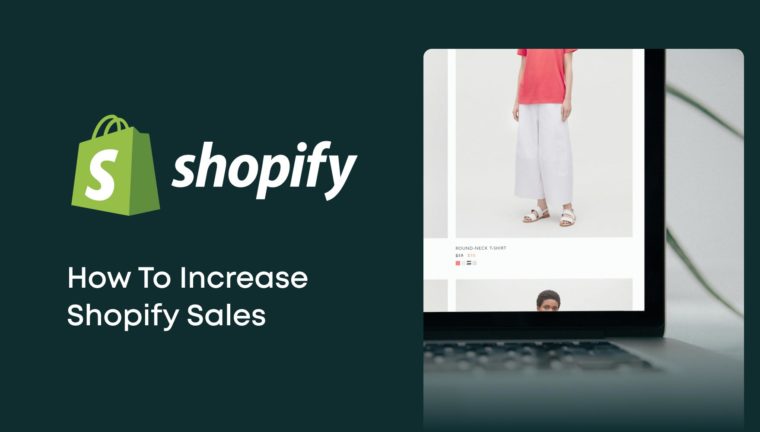“How to increase my Magento sales?”
Most owners of Magento online stores are doing their best to answer this deceptively simple question. And we’ve already given you some relevant ideas in one of our blog articles. However, more than just the theory is needed to illustrate the problem clearly. That’s why we decided to discuss an actual project we worked on and share our experience with you.
But before describing what we did to increase sales on Magento, let’s cover the basics and thus ensure we’re on the same page.
How To Increase Sales on Magento
Of course, many factors influence the level of sales and eCommerce conversion, ranging from home page design to the quality of customer service. But the first thing you should pay attention to is the online catalog. After all, it is the online catalog that potential buyers come from an ad campaign or just in search of the right product, and your task is to provide them with what they are looking for. Otherwise, you might face an unpleasant outcome, for these possible shoppers will leave your online store for the competitive one, increasing your bounce rate.
Alas, many overlook the online catalog visual merchandising in their attempt to figure out how to increase sales on Magento. And that’s a pity, as it is directly related to the time a customer spends on your website.

If you want to get more visual merchandising tips, follow the link and read our article, covering this topic.
We want to ground our vision with a few examples to avoid any confusion and not seem unfounded.
Product Finding Speed
The time factor is crucial, no matter what is being discussed, and shopping is no exception. In the end, not everyone can afford to spend hours looking for the required item, especially when buying online. That’s why you must create a well-structured catalog and thus ensure your customers find what they need with minimal effort.
Undecided Customers
It sometimes happens that the user hasn’t yet decided on the purchase, which is especially typical for choosing gifts (just imagine the number of such shoppers on the eve of the holidays!). This buyer wanders through the websites in search of good ideas, and your project may well be one of them. Your task is to lure these undecided customers to your side and keep them on the online catalog page.
Suppose you failed to offer them something unique and in-demand: at long last, the product range of all stores is more or less the same. In that case, the only way out is to impress customers with unexpected visual merchandising techniques: for example, using an exciting product display and arranging items in the catalog in such a way as to catch the buyer’s eye and make the purchase incredibly tempting. The Magento store will increase sales several times if its owner follows these simple tips.
Landing & Branding Catalog Pages

We should also mention landing pages, selling specific products, and online catalog sections dedicated to particular brands. Oddly enough, the structuring of these all-important pages, often heavily promoted, leaves a lot to be desired: the display of items could be better, and the online catalog fills up haphazardly and without much logic. No wonder the hopes to increase sales on Magento – or another platform – don’t come true even after promotion.
For many eCommerce business owners, catalog management, especially with a large number of categories and products, becomes a problem that requires an effective process optimization solution.
Now that we’ve briefly discussed how to increase sales on Magento for online stores and explained why you should start with catalog merchandising, we’d like to add clarity and make it more illustrative. Therefore, let’s move on to specific examples so that you can see how it looks in practice.
How We Increased Sales on Magento for Our Client

Our client runs a fashion Magento store in the USA and the EU. They had been coping well enough with their business, but the competition with such large and long-term market players as Farfetch and Mytheresa prevented them from achieving all their goals set. Conversions were lower than those of the mentioned companies, which, in turn, hurt sales too.
“How to increase my Magento sales?”
This is precisely the question the client asked our team after realizing the old methods failed to improve conversions.
We started by analyzing the fashion eCommerce niche to understand what we had to deal with and what pitfalls to avoid.
Fashion Industry Analysis
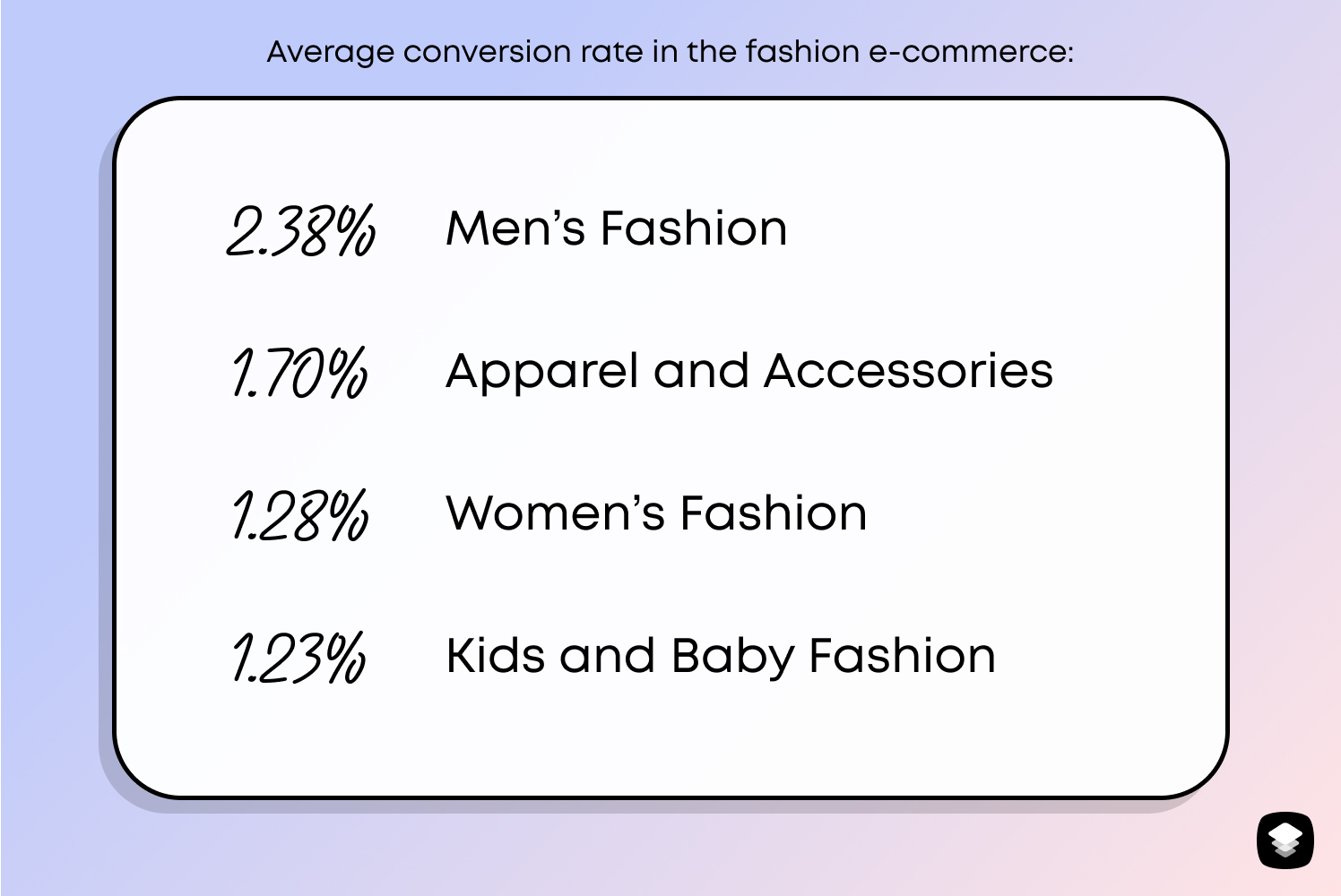
As studies from 2022 and early 2023 show, the average conversion rate in the fashion e-commerce industry largely depends on the specific sub-category:
2.38% – Men’s Fashion
1.70% – Apparel and Accessories
1.28% – Women’s Fashion
1.23% – Kids and Baby Fashion
On average, a reasonable conversion rate for the eCommerce fashion domain is between 1.5% and 3%. But those business owners who want to join the top 20% must have 3+% at least. And if you manage to get 4% conversion, you’ll be among the 10% of best fashion market players.
Now let’s compare: our client’s conversions ranged from 0.5 to 0.6%. As you can imagine, this was far from ideal and required taking action and changing the business strategy.
Online Catalog Audit
To determine how to increase sales on Magento and improve online store’s conversions, we had to analyze the logic of the client’s current catalog, including its sorting & filtering systems, product categories, and so on.
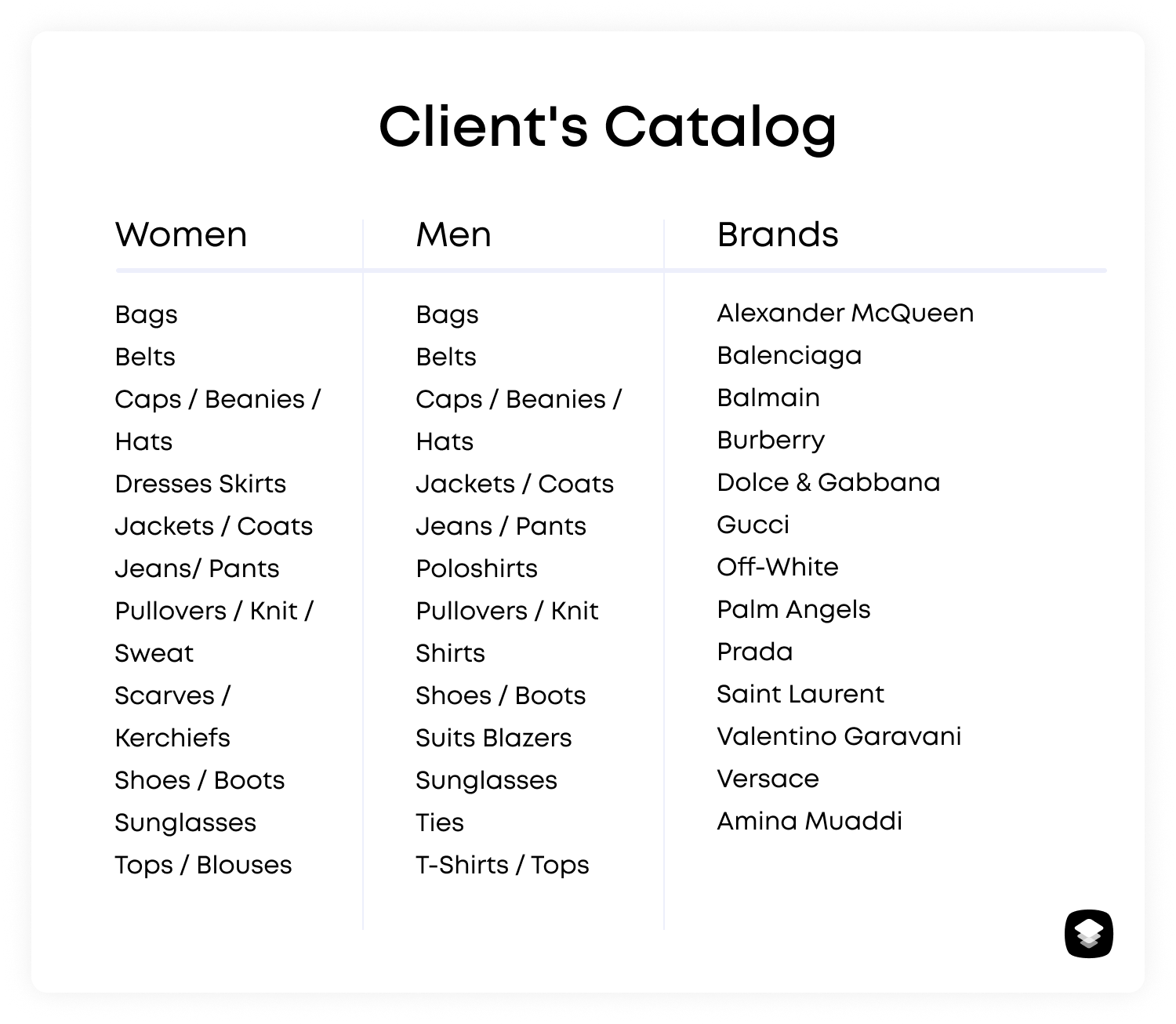
During the audit of the online catalog, we performed the following:
- Systematization of product lines
- Analysis of content variability on catalog pages
- Determination of the amount of low-stock and out-of-stock items
- Identification of poor-selling products in each category
- Distribution of goods by seasons, collections, and themes
- Visual and aesthetic evaluation of the catalog
We determined that the catalog didn’t operate at total capacity and responded poorly to the target audience’s needs. To rectify this situation, we had to showcase the full benefits of the client’s product range and optimize online catalog management with effective visual merchandising tools.
Analysis of Best Magento Apps to Increase Sales
We analyzed the best Magento apps to increase sales and concluded that they weren’t well suited to our project’s goals, namely, the optimization of the catalog management process. The thing is, most of the existing extensions, applications, and modules of this sort lack features for advanced visual merchandising both in default versions and in paid access.
We used Sortler—a SaaS cloud-based service that is easy to implement and efficient to operate. It simplifies catalog management several times, and we often resort to it when working with clients needing to improve their eCommerce visual merchandising.

One of the benefits of Sortler is that it’s not just a Magento module to increase sales; it’s a highly manageable ecosystem that is very easy to access—just register on sortler.com. In essence, you’ll have a special virtual catalog to work with, creating desired process automation rules and visually managing its categories. The best part is that this virtual catalog syncs with the real one, allowing you to track conversion rates and monitor sales growth.
Problems & Solutions
#1. Low Product Variety
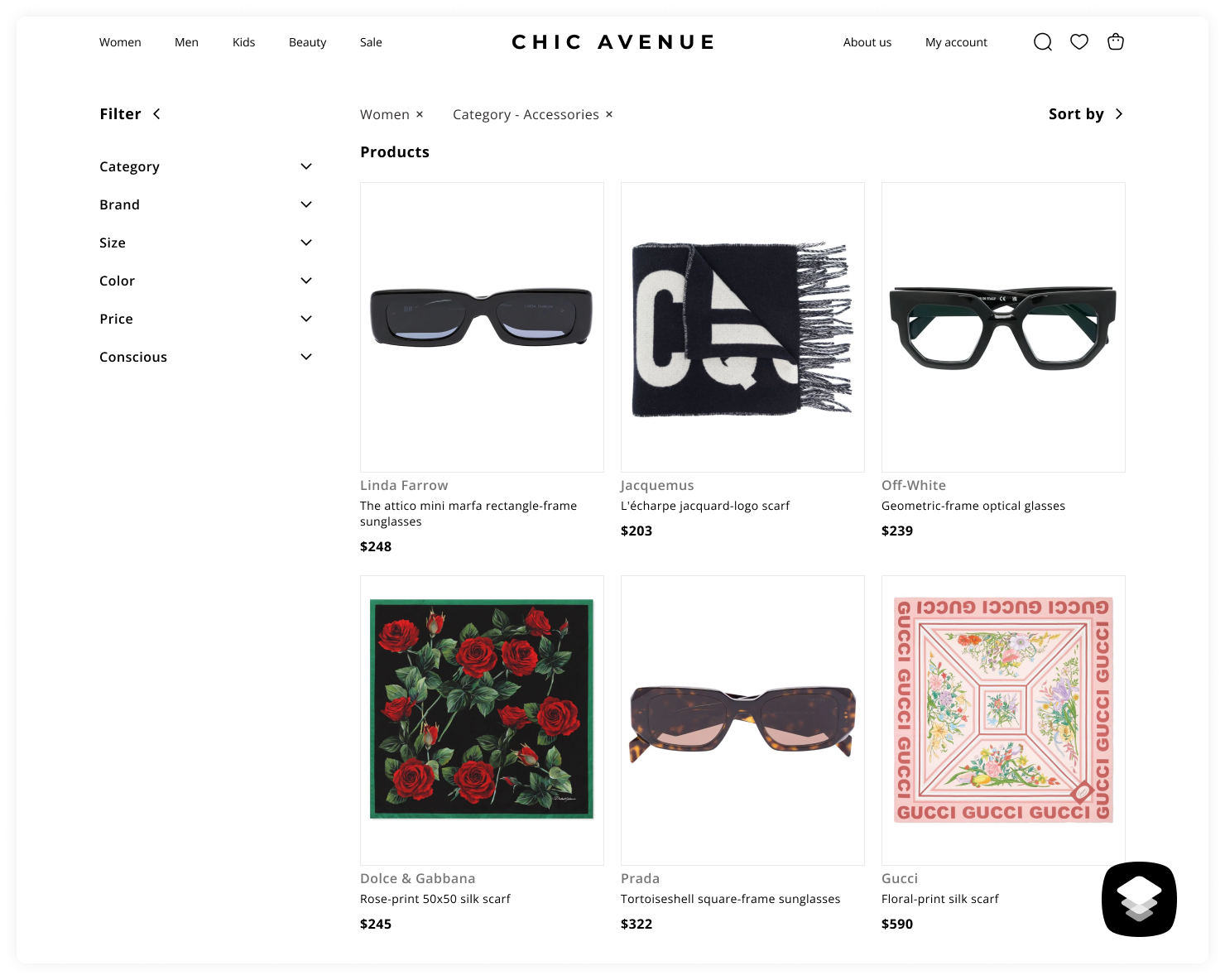
First of all, we noticed a need for more item variety in the catalog listing. Let’s say, going to the WOMEN or MEN section, the user saw that some product groups were in the majority while others remained hidden. And one had to use filters or run through the pages to see everything the catalog could offer.
Here is a few examples we’re talking about:
- Armani products appeared on the first page 13 times, while Givenchy products were displayed only twice
- Scarves were added 27 times, and sunglasses were shown just 4 times at the bottom of the catalog’s page
- Popular brands were poorly shown in the catalog top, which reduced the likelihood of a user buying them
Solution
To solve the problem, we had to take care of catalog prioritization and add variety to its listing. The goal was to fully cover the target audience’s needs and increase the chances of the customer making an actual purchase.
Using Sortler’s features, we created several simple rules to determine how products should be distributed on the catalog pages and in what quantity:
- We specified the maximum number of identical item groups per page: subcategories, types, and attributes (such as color or style)
- We hid less relevant products and product groups and made popular ones more visible on the catalog pages
- We indicated what percentage of the products of each brand should be shown on the catalog page (thus, we help our client avoid the prevalence of one brand over another, no less in demand)
Using Sortler, we were able to automate the above-listed catalog management processes: there is no need to spend time and effort manually distributing products on the page. It’s enough to create a rule just once; the rest is up to Sortler.
Thus, this tool contributed to the Magento store’s increased sales and streamlined client’s business operations.
#2. Unsuitable Item Combinations
To boost sales, a fashion store’s catalog must display products next to others similar in style or color, thereby creating a finished look and incentivizing the customer to buy several items instead of just one. The same applies to filtering: shoppers should see related clothing options that may interest them (however, don’t overdo it and stick to the golden mean).
Unfortunately, our client’s catalog failed to showcase impressive product combinations.
Solution
Once again, we used Sortler to create a rule, within which we formed a group of options, determining how to combine items on the catalog page.
To make it more transparent, let’s explain with an example.
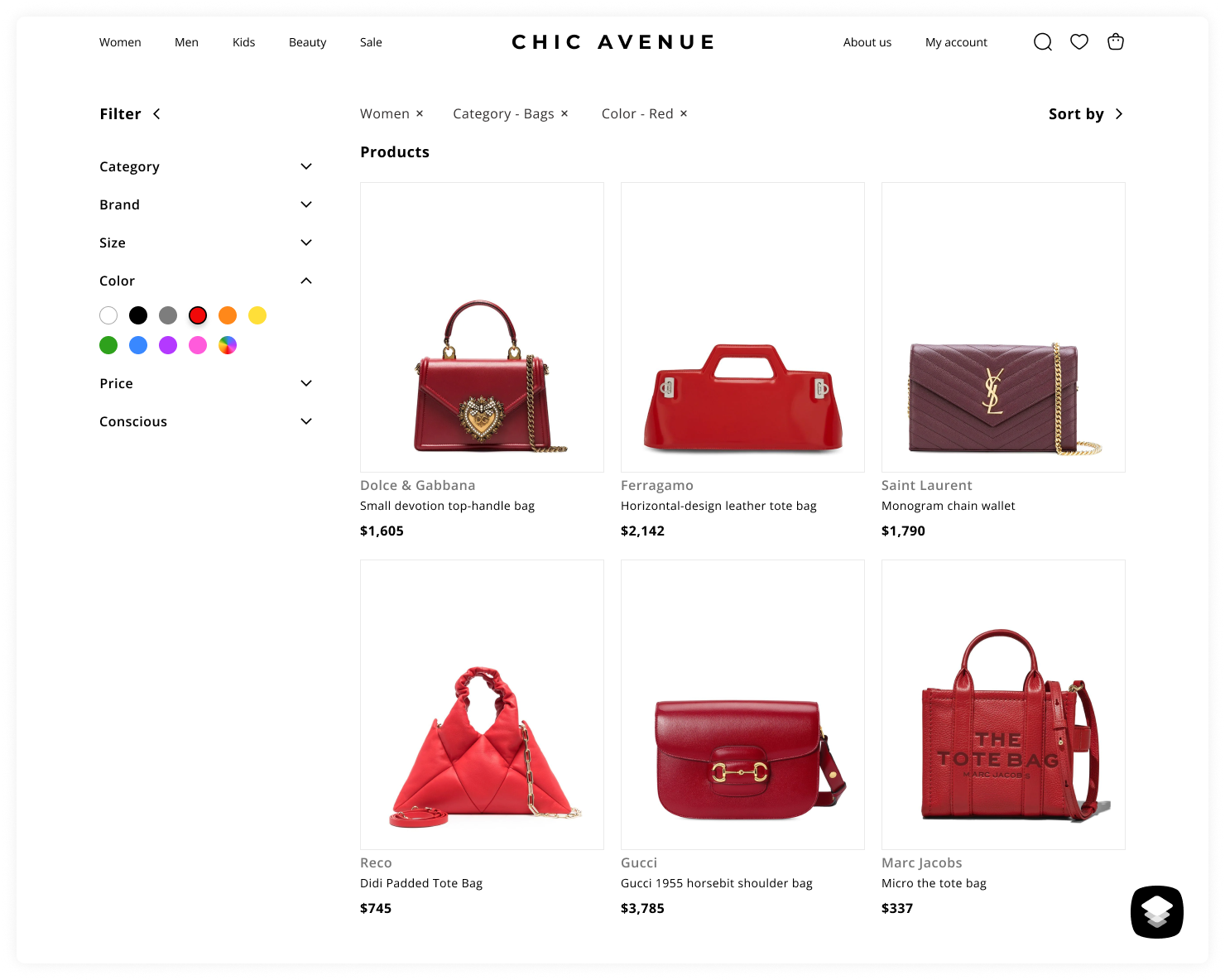
We added the COLOR attribute and supplemented it with a RED option, which collected similar shades of this color, including light red, dark red, scarlet, chili, purple, and more. In this way, we managed to avoid misunderstandings with consumers: let’s say if someone asks for red bags, he’ll get them in all red-like variations (not just the traditional red ones).
Another example is using Sortler to show a pre-defined number of matching product combinations next to each other, such as “blue leather phone case” and “blue headphone case” from the same collection. As a result, the customer sees multiple options in a similar style when choosing accessories.
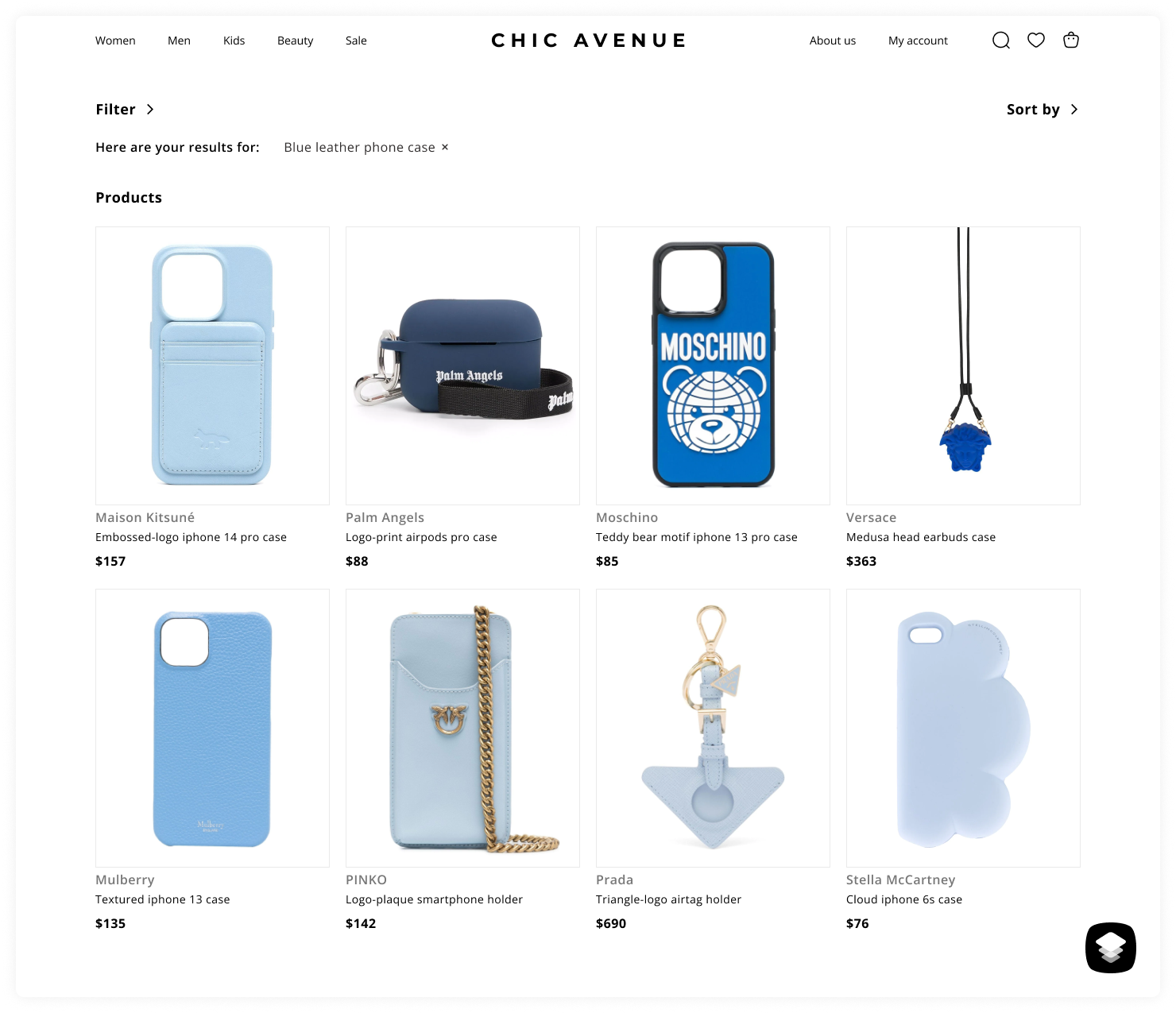
By setting up rules for different combinations and combinations, we achieved good results, namely:
- Category pages place products next to similar ones in style, color, or other criteria to fit our “best match” selection.
- We adjusted the percentage of stylish combinations that can be shown on the page.
- Customers who use a filter to indicate their desired color get what they’re looking for in all related shades and within our specified percentage range.
- This applies not only to colors but also to other attributes as well.

If you want to increase sales on Magento, you should be aware of what is popular and demanded right now. Follow the link to learn more about the latest visual merchandising trends in the eCommerce area.
#3. Low-stock & Out-of-stock Products
Another problem we discovered was the uncontrollable amount of low-stock and out-of-stock products on the catalog pages. Poor management of these positions made the customer unable to order the desired items despite their presence in the catalog listing. The result was an increase in the bounce rate.
Solution
We discussed with the client what percentage of low-stock products to place in the catalog listing and agreed to mark these positions so the customer could see they were running out. Sortler helped us put this into practice without any extra effort.
We also created a rule for which out-of-stock items should be automatically moved to the end of the catalog.
#4. Poor-selling Products
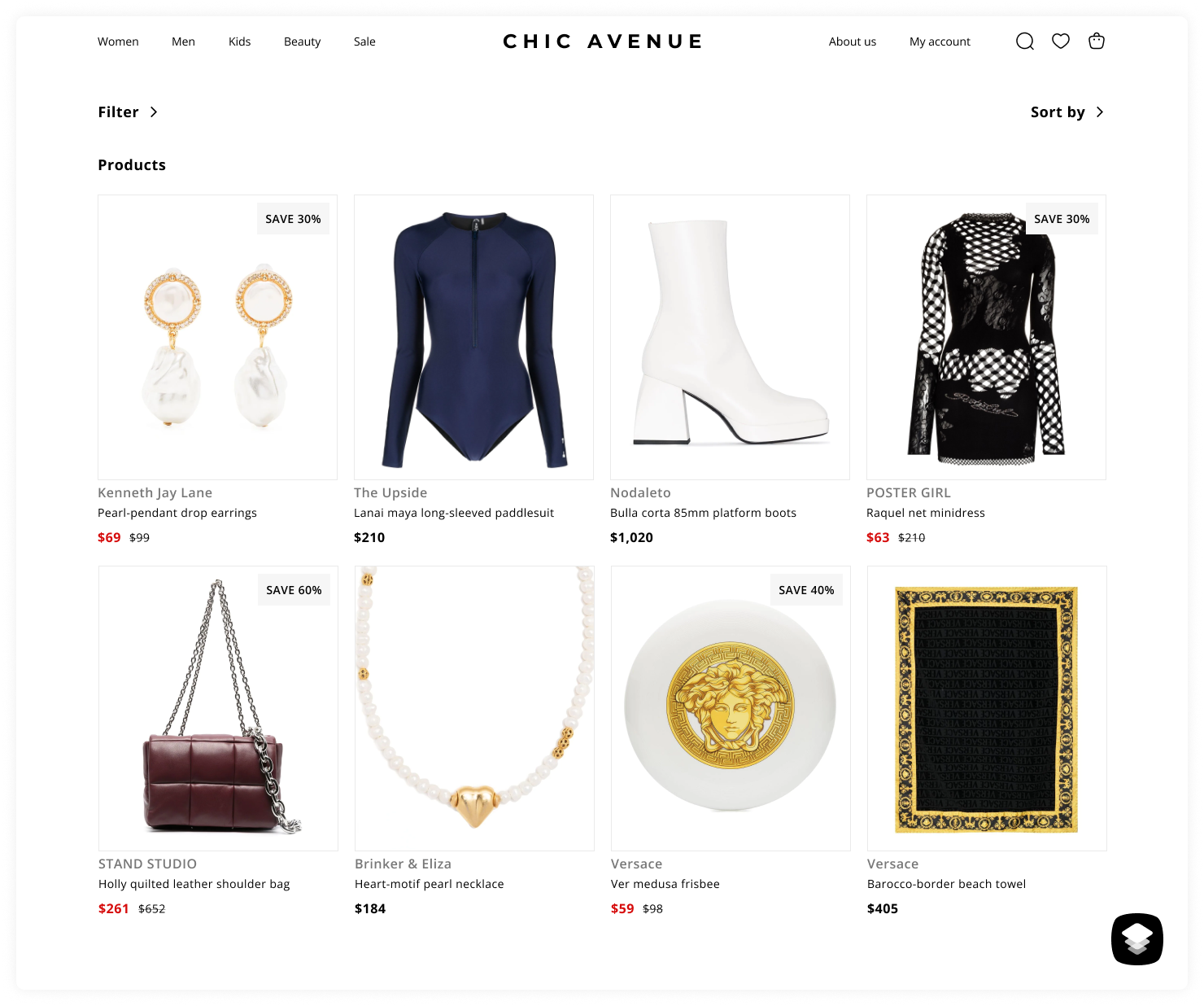
The client had a lot of low-selling products, which wasn’t due to their poor quality since similar items remained popular with competitors’ customers. We concluded that the reason for the lack of demand could be the product position in the catalog.
Both of these problems can be easily solved with Sortler, helping our client’s Magento store increase sales.
Solution
We used Sortler’s flexible features to help our client manage low-selling items in a better way:
- Using a handy filter to track all underselling items so that the client’s team can take immediate action to prevent possible financial damage.
- Automatic raising of specified low-selling product groups up the catalog to make them more visible on the page.
- Special rules for applying discounts to items that remain poor-selling for a long time.
The logic is simple: you should start by moving low-selling products to the top of the catalog, and in case they still don’t bring the expected profit within a predetermined time, apply a discount system. Most importantly, you yourself don’t have to track the right moment to implement discounts: the described scheme is automated by Sortler (it’s enough to create the appropriate rule).
#5. Visual Catalog Customization
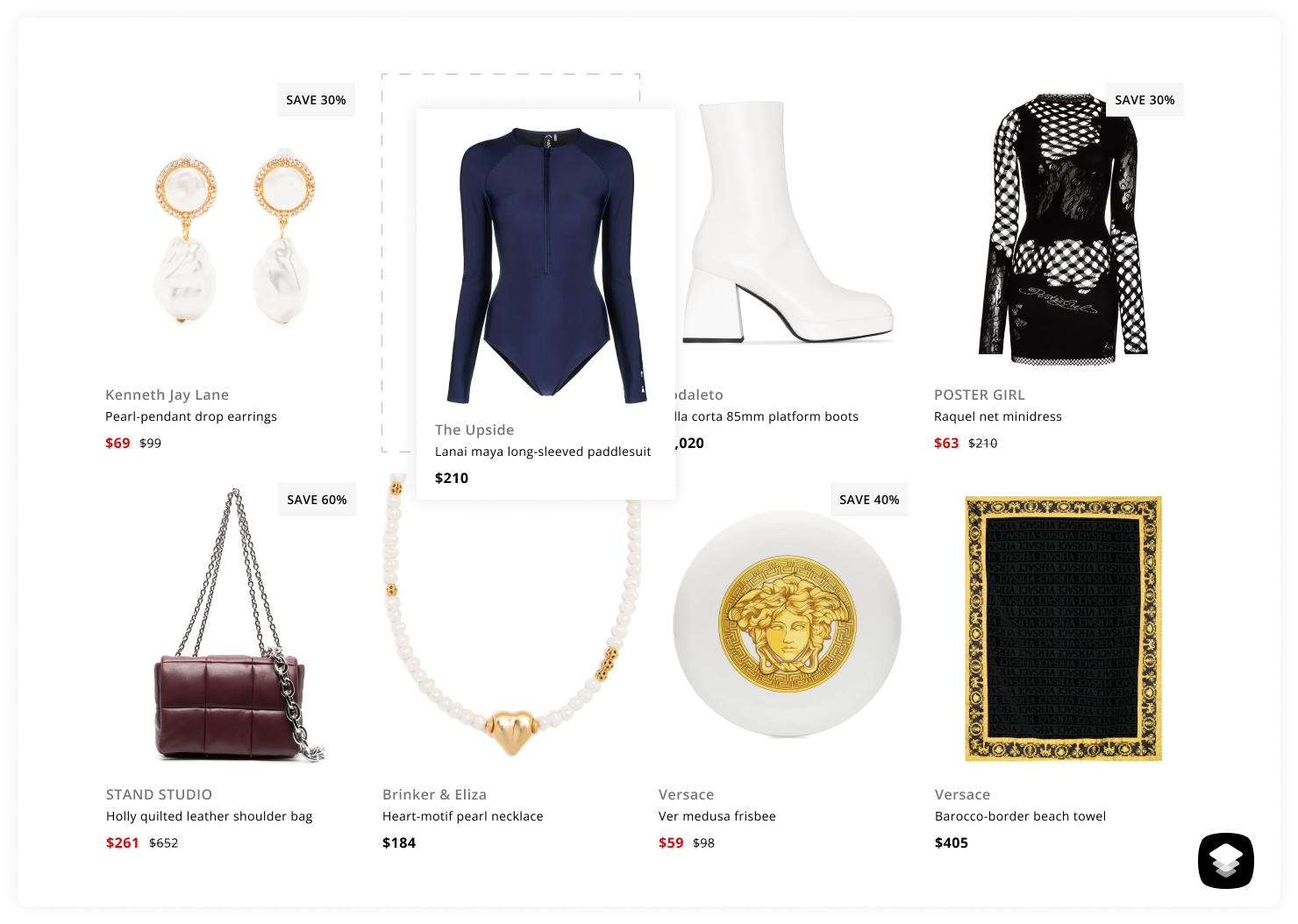
Work on increasing sales on Magento through visual merchandising will continue because this process is never-ending. That’s why we had to find a solution to help the client conveniently interact with individual catalog sections (say, landing or branding pages) on the eve of various ad campaigns.
Solution
We’ve set up a Drag & Drop feature that visualizes the work with catalog items and allows the client to manually “move” and sort products on its pages. In most cases, this is the most intuitive and fastest way, as you can immediately see if you’ve achieved the result you imagined.
Outcome
The online store specialist had constantly been monitoring critical website indicators, including the bounce rate, position views, conversions, etc., and introducing the necessary adjustments to the catalog management strategy.
In just a month of work, together with the client’s team, we managed to achieve the following:
- Conversion growth of up to ~1.2%
- Up to 15% increase in average order value
- Saved time and effort of the online store management team
As a result, our client’s Magento store increased sales several times, which was the primary goal. And this is just the beginning because the work on improving visual merchandising keeps going and continues to bear fruit.
If you also want to make online store management more efficient and intuitive, sign up for Sortler and get access to a convenient and flexible virtual catalog. Sortler is easy to implement and use and quite affordable. Moreover, the support team is ready to answer all your questions 24/7.

